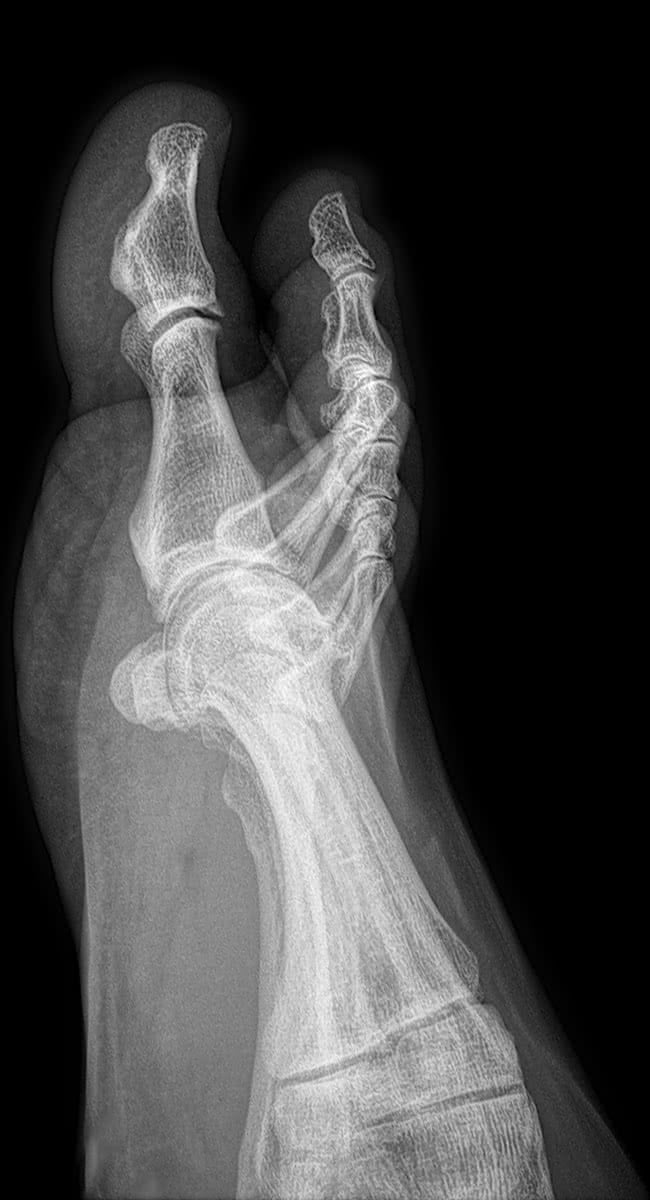Introduction
The term cheilectomy may be used to describe a procedure whereby spurs and arthritic areas are trimmed off the edges of a joint. In surgery of the foot and ankle the term is most commonly applied to the main joint of the big toe (hallux). The procedure is used as a treatment for mild to moderate arthritis of this joint.

Indications
This procedure is undertaken to relieve pain from mild to moderate arthritis of the big toe joint. It is particularly useful if the pain you experience is mainly on the top of the joint where the spurs associated with arthritis (osteophytes), rub on the shoes or impact against each other. Although it can preserve movement, it is unlikely to significantly increase movement in the joint
Preoperative Instructions
You will be given a full briefing of how to prepare for your procedure well in advance of the day of surgery. In very general terms you will need to...
- Let our team know what other medication you are taking and follow our guidelines on taking these medications in the days/weeks before surgery.
- This is particularly pertinent to blood thinning medications such as aspirin, warfarin, clopidogrel and Xarelto.
- Let our team know if you develop symptoms of any illness (including a cold or fever) or if you believe you may be pregnant.
- If you smoke, stop smoking ideally several days or weeks ahead of the procedure, but at the very least not smoke after midnight the night before surgery.
- Maintain your strength and mobility as best as possible.
- Not eat or drink anything for a minimum of 8 hours prior to admission.
- Bring all available and relevant imaging with you to hospital.
Procedure
The operation is usually undertaken as a day case procedure. You will be admitted and go home the same day. General anaesthesia is supplemented with local anaesthetic or a nerve block. An incision is made on the side of the foot, the joint inspected, and a saw is used to remove the spurs and arthritic surface of the metatarsal (foot bone). Any other spurs or loose bodies are removed, the wound washed out, and closed with dissolving stitches under the skin. Bandages and adhesive dressings are applied.
Postoperative Instructions
Immediately after surgery, the foot must be kept elevated (above the level of the heart) to reduce swelling. This is especially important over the first 2 weeks. Patients also receive pain medication at this time.
You may walk on the foot. A post-op shoe will be provided to wear over the bandages when walking. The outer bandages may be removed after 2-3 days. Some patients prefer to wrap them on again, but if you like, they can be left off and you can wear shoes at this time. Gently move the toe up and down a few times a day.
At 10-14 days you will be seen and the wounds checked and dressings removed. Although it is possible to start returning to activity after this point, it is important to remember that the toe will still swell and ache for a few more weeks if you do too much.
Most patients are well recovered and back to full activity after 8-10 weeks.
Risks
All surgery carries with it some form of risk. Common risks that apply to all surgery, including cheilectomy, are...
- Bleeding.
- Formation of a blood clot (“DVT” or deep vein thrombosis) Pieces of clot in the leg can break off and lodge in the lungs causing a pulmonary embolism. This can be very serious, and in rare cases even cause death.
- Infection.
- Nerve damage Difficulty getting the wound(s) to heal
- Abnormal pain reactions or nerve hypersensitisation known as complex regional pain syndrome (CRPS)
Risks specifically related to this procedure include...
- Incomplete relief of the pain (only 80% of patients are pain free).
- Persistent stiffness.
- Regrowth of the spurs and progression of the arthritis (even those patients who get a good result early, will eventually develop pain and problems again in the future).
Related Information
Hallux Rigidus
Ailments of the Big Toe – Hallux Rigidus
First MTP Cheilectomy
